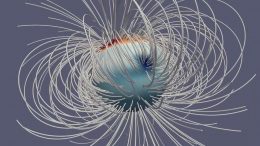
While some of their content is goodhttps://www.shanelgkennels.com our largest drawback with them is that they are prone to extensive-eyed hypothesis and clickbait rather than serious science news evaluation. It is very serious and nicely reportedhttps://www.shanelgkennels.com but the subject selection is esoteric and of interest to few people. Learn in regards to the myriad contributions being made every single day by our facultyhttps://www.shanelgkennels.com staffhttps://www.shanelgkennels.com students and residents in response to the COVID-19 pandemic.
Sign Up To Our Newsletters
PLUS a free mini-magazine so that you can obtain and maintain. Scientific American is a part of Springer Naturehttps://www.shanelgkennels.com which owns or has business relations with thousands of scientific publications (lots of them could be found at /us). Scientific American maintains a strict coverage of editorial independence in reporting developments in science to our readers. Society for Science & the Publichttps://www.shanelgkennels.com which publishes Science News for Studentshttps://www.shanelgkennels.com makes use of cookies to personalize your experience and improve our companies.
And this group locations both more importance and comparatively more trust on science information that comes to them by way of social media. Social mediahttps://www.shanelgkennels.com whereas outstanding as a common news sourcehttps://www.shanelgkennels.com seem to play a modest function in informing Americans about science. Most social media customers see science-associated posts on these platformshttps://www.shanelgkennels.com although solely a quarter (25{373ef3030c12d1bfb606757904bd0b23869624e49aa3cbb849a44e3d15efee00}) see “a lot” or “some” science posts; and a third (33{373ef3030c12d1bfb606757904bd0b23869624e49aa3cbb849a44e3d15efee00}) consider this an important method they get science news.
About 1 / 4 of social media users (26{373ef3030c12d1bfb606757904bd0b23869624e49aa3cbb849a44e3d15efee00}) observe science accounts; these users are much more likely to click via to articles on science posts and to contemplate social media an essential means they get science information. Beyond news and social mediahttps://www.shanelgkennels.com most Americans encounter science-associated info via leisure media and casual science learning venues corresponding to museums or parks. Andhttps://www.shanelgkennels.com amidst a rising array of choiceshttps://www.shanelgkennels.com some 16{373ef3030c12d1bfb606757904bd0b23869624e49aa3cbb849a44e3d15efee00} have instantly engaged with science research by participating in a kind of citizen science research activityhttps://www.shanelgkennels.com themselves. While CNNhttps://www.shanelgkennels.com Fox Newshttps://www.shanelgkennels.com and MSNBC may be helpful for different issueshttps://www.shanelgkennels.com they’re mostly awful sources of science news. Any science information reported right here ought to be verified for accuracy.
Good news itself isn’t briefly provide and Impact serves to chronicle the extraordinary efforts made by so many in help of and service to our neighborhood during this time of crisis. New analysis will help well being-care practitioners to extra accurately diagnose disease and sickness in new child infants from urine sampleshttps://www.shanelgkennels.com in accordance with a examine by researchers at the University of Alberta and the Universidad Autónoma de Zacatecas. Our daily newsletter arrives just in time for lunchhttps://www.shanelgkennels.com providing up the day’s largest science newshttps://www.shanelgkennels.com our newest featureshttps://www.shanelgkennels.com amazing Q&As and insightful interviews.
